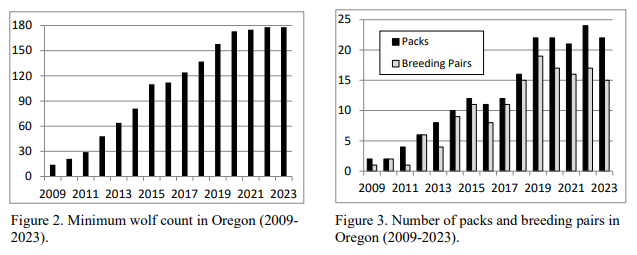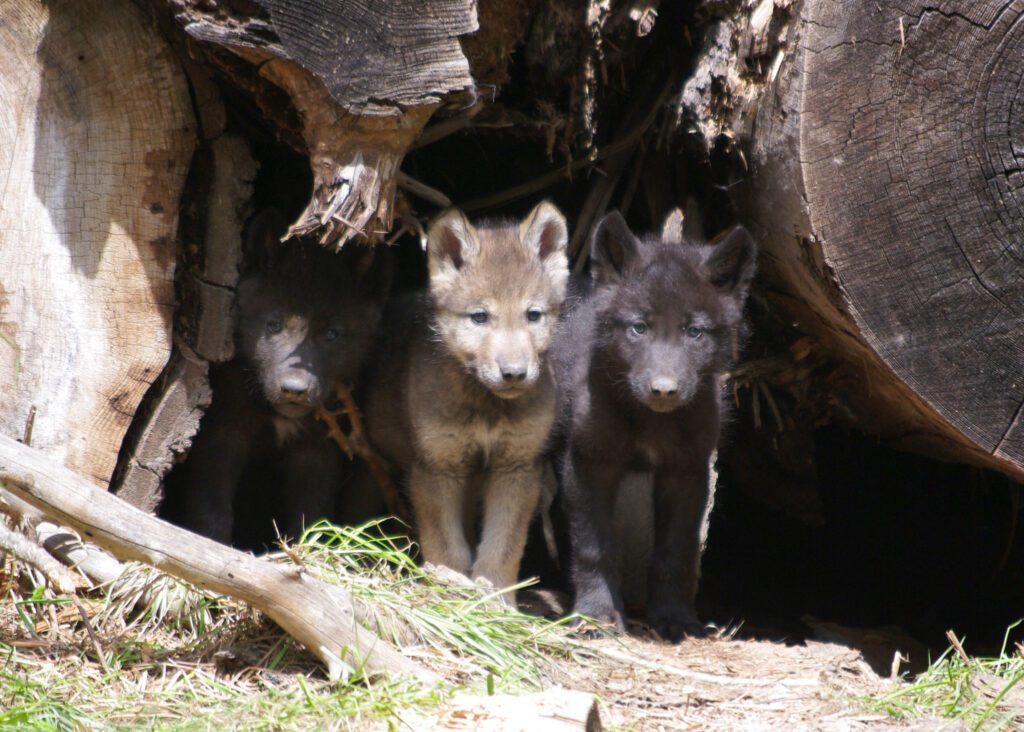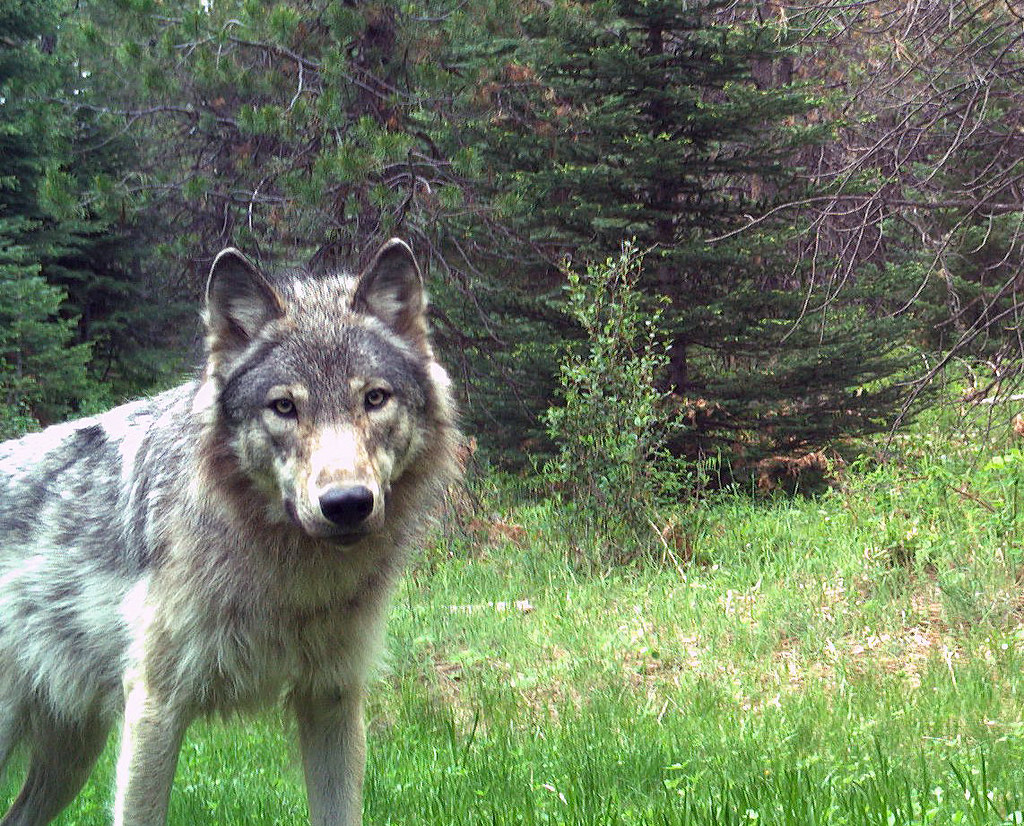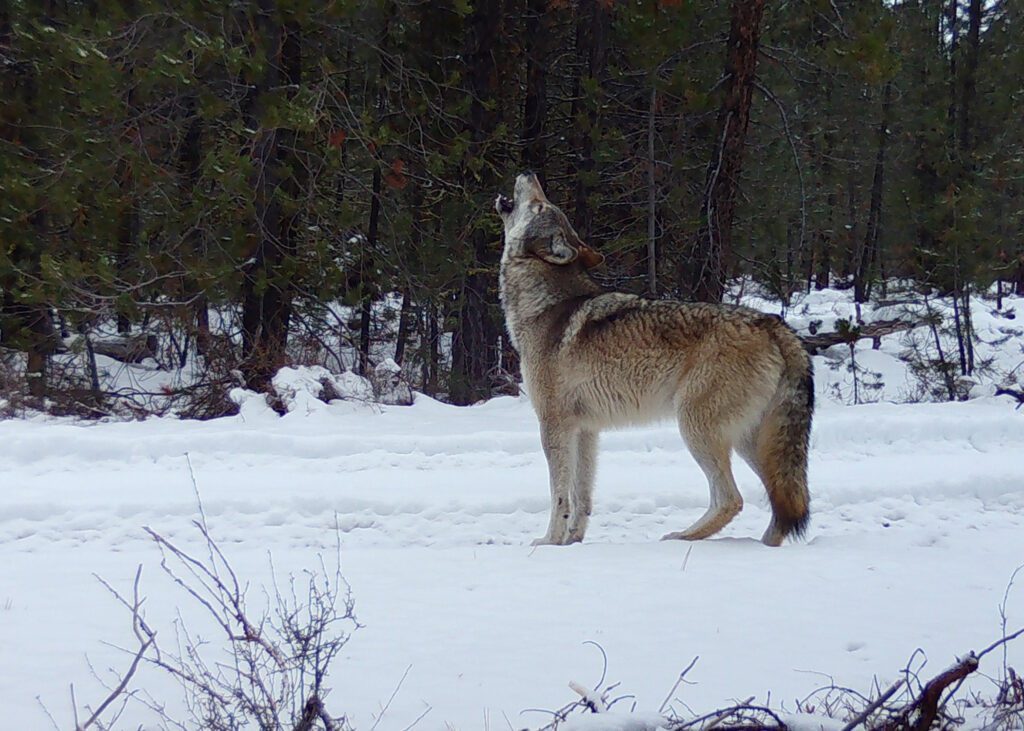Late last Friday afternoon, the Oregon Department of Fish and Wildlife (ODFW) released its 2023 Wolf Report. The report, which was not directly linked to in the agency’s press release, update page, or email reveals a series of disturbing trends.
ODFW attempted to present its data in the most positive light. This is a trend we’ve discussed before. We even named our first deep-dive “Friday Trash” after the agency’s pattern of releasing embarrassing news on Friday afternoons to avoid scrutiny. For more analysis, check out our 2018 edition called “Spring Cleaning.”
Sadly, a look at the most recent numbers reveals things have only gotten worse. Still, rather than try something different, the agency continues to go to great lengths to polish the proverbial turd.
Here’s a closer look at the data the state hopes you won’t notice. It shows Oregon’s wolves are facing critical challenges.
Rampant Poaching and State-Sanctioned Killings
A shocking 20% of the state’s known wolf population was killed last year, with at least 36 wolves confirmed dead.
33 were killed by humans. Most of them on purpose. That includes 10 who were poisoned in multiple incidents, two who were shot, 16 state-sanctioned killings, four vehicle strikes, and one incident deemed “self-defense.” This high level of poaching, poisoning, and intentional killing underscores a severe threat to wolf conservation efforts in Oregon.
The number of wolves killed by state authorization doubled from any previous year, with 16 wolves shot and killed by agents of the state. ODFW justified these actions as responses to livestock predations, which remained very low (<0.03% of all cattle deaths) and decreased last year. This self-defeating cycle is exactly what scientists have documented around the country and predicted would happen when the state weakened protections for wolves in 2015 and 2018.
To have any credibility, the agency must reassess management practices that currently favor and expedite lethal measures over requiring more effective, sufficient non-lethal methods, and giving them a chance to work.
0% Population Growth
2023 marked another year of stagnant growth, continuing a distressing trend where the wolf population has grown by less than 3% over the past four years. This last year, the known wolf population remained at 178.

Even though we used a legitimate statistical analysis to account for potential inflection points based on changes in management paradigms, in 2018, ODFW criticized a chart we put forward predicting stagnant population growth. Especially based on the arguably more important number of breeding pairs, it now looks borderline optimistic:
When wolves were delisted by the state, they did so based upon a model criticized by independent scientists for being fundamentally flawed and too optimistic. In that model, 7% annual growth rate was set as the worst-case scenario. After this year’s report, annual growth since delisting is 6.3%.

Even in the worst-case projection, ODFW expected Oregon would now be home to no less than 189 wolves. Even less scientifically defensible, in justifying a bill to bar judicial review of delisting, a state senator testified that the population would surpass 700 animals by 2018!
Sadly, the same politicians who passed that bill under a cloud of ethics violations continue to demonize wolves and spread fear for political gain. Just last week Congressman Cliff Bentz was quoted saying “The challenge is going to be how to convince the nation these animals are just what they were created to be, killers. Cold killers, that’s what they do for a living.”
Decrease in Breeding Pairs & Packs
In justifying slow growth in previous years, ODFW argued breeding pairs was the most important indicator of population trends. There is some truth to that. Breeding pairs are the backbone of any growing wolf population. Yet in Oregon, their numbers have dropped to levels not seen since 2018.
This decline occurred both in Western and Eastern Oregon, signaling a statewide concern that cannot be ignored. The decline in breeding pairs is a clear indicator that human-caused mortality – poaching and state-authorized killing – is directly impacting their ability to sustain their populations.

The number of wolf packs has also decreased statewide – particularly in Western Oregon.
But it’s not as rosy in Eastern Oregon as many reports would have it. Though the vast majority of the state was once habitat for the native carnivore, the agency has written off most of the landscape and said the region is now essentially full. However, scientists say the state has the habitat and prey base for a population of nearly 1,500 wolves.
Meanwhile, at a far lower number, Eastern Oregon’s wolf population declined for the second consecutive year. That’s after increasing by only a single animal the year before. Eastern Oregon’s known population is now just 133 animals. That’s a 9% decrease from last year and a 6% decrease since 2019.
And yes, some of that decrease is accounted for by ODFW’s decision to translocate ten wolves to Colorado. But, rather than a sign of Oregon’s tremendous success, it was a choice that further slowed recovery here. Too bad it turned out that offers from even more overtly anti-wolf states like Idaho to send their wolves to “liberals who want ’em” were just childish rhetoric.
Natural Deaths: A Rare Fate for Oregon’s Wolves
Shockingly, since 2008, only 12 wolves in Oregon are known to have died of natural causes. This stark statistic underlines the harsh realities wolves face from human killing and inadequate protection. Known wolf deaths surged by 80% this year, following already high numbers in the previous years. Last year, and since recovery began in the state, just over 8% of wolves – including pups – are known to have died from any cause other than humans.
This trend is not just unsustainable. It speaks volumes about the value ODFW puts on wolves even as it gives in to industry demands and decries an inability to “manage” the species.
More Conflict Where Protections Are Weaker
Separately, ODFW noted a decrease in livestock predation incidents and an increase in wolf killing. Counterintuitive as they may seem, these numbers are related. It’s exactly what scientists have documented across the country and predicted would happen when protections for wolves were weakened here.
Killing wolves may be easy and cathartic for some. However, it leads to more conflict, which leads to more wolf killing, and more conflict, and more killing, and on and on.
For a period of time, ODFW was forced to try something different. And it worked. Under a legal injunction, the state was prohibited from killing wolves. That was followed by increased protections from a settlement agreement between conservationists, the livestock industry, and the state. During those years, the agency did not kill wolves. The population grew, and there was less conflict with livestock. That’s what everyone says they want. Less dead cows, less dead wolves, and less angry people.
But, rather than double down on success, Oregon’s legislature and wildlife commission gave in to political pressure and lowered the bar for killing wolves. So it was that, yet again, in 2023, scientists’ warnings came true.
In Eastern Oregon, where protections are weaker, wolf killing increased yet again in 2023. Even as the population decreased, predation incidents went up. More dead wolves, more dead cows, more angry people.
Meanwhile, in Western Oregon, where wolves enjoy stronger protections, less wolves were killed. The wolf population increased by 40%. Meanwhile, incidents of predation decreased by 60%. Less dead cows, less dead wolves, less angry people.
ODFW’s Lack of Transparency
Adding to the concerns, ODFW has stopped sharing critical data on livestock predation claims that definitively turn out not to involve wolves. Historically, 40-80% of such investigations concluded that wolves were not the culprits. This lack of transparency prevents a clear understanding of the situation. It fosters misinformation and does nothing to disincentive “crying wolf” and wasting taxpayer dollars on unnecessary investigations.
The agency is also now lumping together reporting on taxpayer compensation for livestock managers who lose livestock to wolves along with those who simply lose track of their animals in wolf country. Embarrassingly, even politicians consider radically increasing compensation paid for the loss of unattended livestock; for every dollar spent to pay actual (and “probable”) losses to wolves, $1.50 is paid out for animals that just go missing.
Department of Fish and Wildlife or Department of Livestock
Conservationists, scientists, and the public have long lamented ODFW’s inability (unwillingness?) to honor their conservation mission. For decades, the agency has bent over backward to appease ag interests and the hunting/fishing community while ignoring their charge to serve all Oregonians. In addition to the usual Friday news dump and euphemisms to which we’ve become numb, the agency lamented the decline of wolves not as a conservation failure but rather because it delays their ability to move to a new phase in Western Oregon. That new phase would reduce protections and allow wolf killing in line with Eastern Oregon. (more dead wolves, more dead cows, more angry people)
Despite no one ever being so much as licked by a wild wolf in Oregon, the agency created a new category of wolf killing called “human safety.” Oregon allows the killing of any animal in defense of human life. Perhaps understandably, investigators give a lot of benefit to any doubts. Past incidents have shown that while people are killing wolves out of fear, there is no objective evidence of wolves actually threatening humans. In fact, a subsequent public release of information on one “self-defense” killing showed the animal was shot while running away.
And, as ever, while staying silent on any of the positive aspects of the recovery of a native, persecuted, keystone species, the agency laments the “burden” of wolf recovery to landowners and livestock managers. As a landowner who owns a farm in wolf country (a tremendous privilege, not a burden – even when nature makes things challenging), I know that’s not the full story.
We Must Demand Better
The 2023 wolf report from the Oregon Department of Fish and Wildlife paints a grim picture of the state of wolf recovery in Oregon. Frustratingly, it’s not a surprise. It’s exactly what we and scientists said was coming – a token persecuted population of wolves that remain at the center of ongoing and entirely unnecessary conflict, controversy, and killing.
The data reveals a series of failures in current management practices and a worrying trend for the keystone species. Oregonians who value wildlife alive more than dead must demand better from ODFW. Stronger protections, increased transparency, and a genuine commitment to sustainable conservation practices are needed to ensure that wolves can once again thrive and play out the role they played since time immemorial on Oregon’s landscapes.






